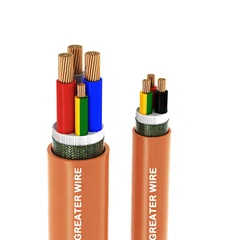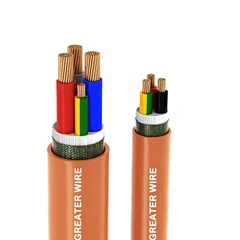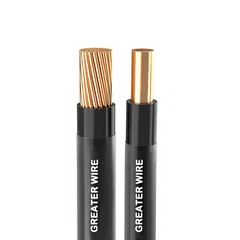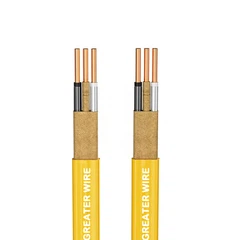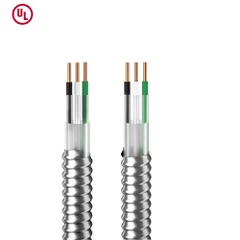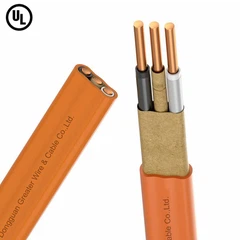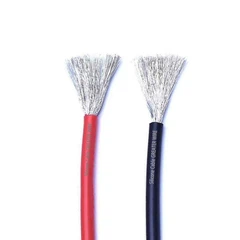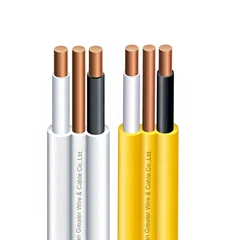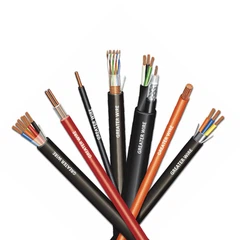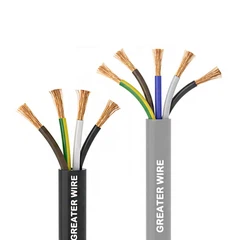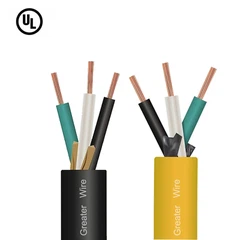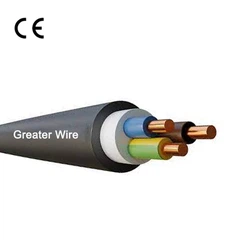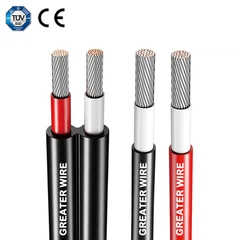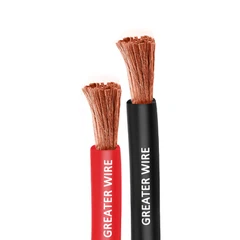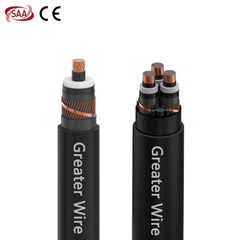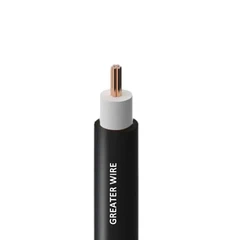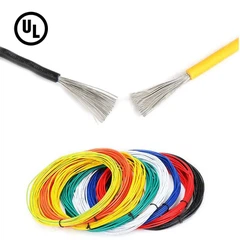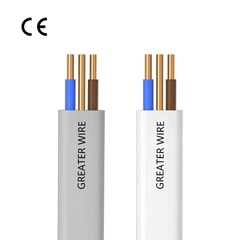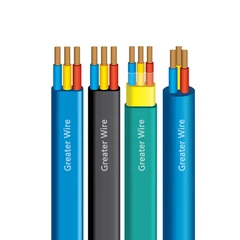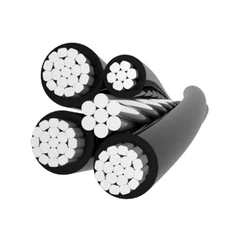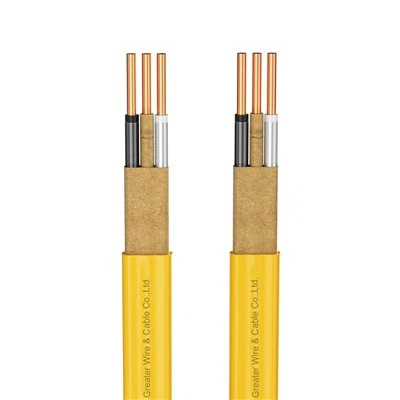
Green yellow earth wire electrical cable is a component commonly used in residential electrical systems. It uses standard ordinary annealed copper conductors to ensure excellent conductivity and durability. It is rated for a maximum continuous operating temperature of 75°C and can operate up to 90°C without mechanical deformation of the cable, making it suitable for use in a variety of environments with different temperature ranges.
Application
Green yellow earth wire is designed for a variety of essential applications in electrical installations. It is ideal for use as a separate earth conductor, particularly in switchboards and control panel wiring. This wire is also suitable for fixed wiring within enclosed systems or equipment, where access requires the use of tools, ensuring safety and compliance. Engineered for environments with higher ambient temperatures, it offers superior aging properties compared to standard 75°C PVC cables.

Feature

● Approvals: AS/NZS 5000.1
● Conductor: Plain annealed copper conductor
● Insulation: V-90 PVC
● Insulation Colours: Red, Black, White, Blue, Green/Yellow
● Normal Operating Temperature: 75°c
● Minimum Operating Temperature: 0℃
● Installation Environment: In Conduit
● Voltage: 0.6/1KV
● Certification: SAA
Certification
Green yellow earth wire electrical cable has passed all SAA tests and complies with AS/NZS 5000.1 standards. SAA certification is a legal requirement for sales in the Australian and New Zealand markets. With certification, the cable can legally enter the market and comply with regulatory requirements to avoid legal disputes. The product has passed CCC, ROHS, CE, CB, SAA, TUV, VDE, UL, CUL, FCC, SGS, and other quality system certifications, and obtained a number of patent certificates, with independent brand trademarks.

Package

Production Line

Dongguan Greater Wire & Cable Co., Ltd. was established in 1995, it is a professional wire and cablemanufacturer. Our company has advanced production equipment and production technology, complete testingequipment, and strong product technology strength. After years of hard work and the support of clientsfrom all over the World, our company has developed rapidly and won a high honor and share in overseasmarkets. The company has passed the ls09001 quality management system certification, National hightech enterprise certification, national specialization, and special new enterprise certification.
customer

Partner
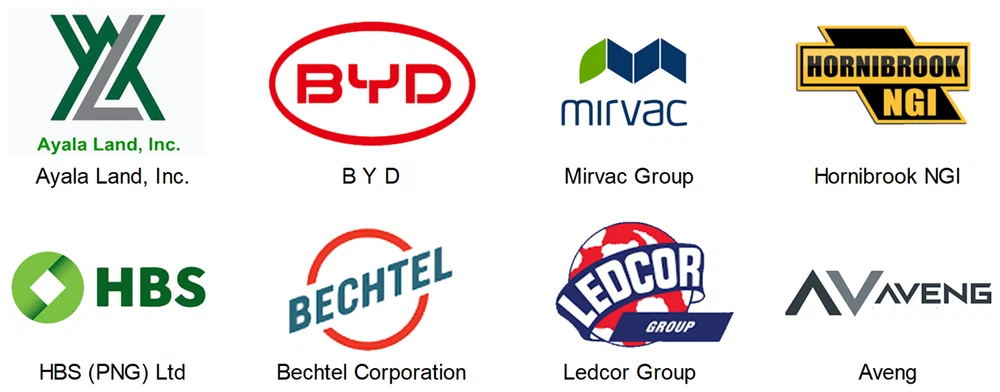
FAQ
Q: Why do you need an earth cable?
1. Provide electrical fault safety
If a live wire touches the metal part of an appliance or electrical equipment, the grounding wire ensures that the excess current flows to the ground, preventing the metal casing from becoming live and causing electric shock.
2. Overcurrent protection
By creating a low-resistance path for the fault current, the grounding wire helps to quickly trip or blow the fuse.
3. Voltage stability
It provides a reference point for the voltage of the electrical system, ensuring stability and reducing the risk of voltage surges.
4. Lightning protection
In outdoor installations, grounding wires protect against lightning strikes by providing a path for surges to dissipate to the ground.
5. Reduce electromagnetic interference (EMI)
Grounding wires can help mitigate EMI in sensitive electronic equipment by grounding stray signals.
Q: How do I identify an earth cable?
1. Color Coding
Standard color code: Most modern electrical systems follow a standard color code:
Green with yellow stripes (in most countries, including Europe and the UK).
Plain green (in some older systems or countries like the United States).
Exception: In older wiring systems, ground cables may not be color coded. They may be bare (uninsulated) or wrapped in a sleeve.
2. Bare or Stripped Wire
In some systems, the ground wire may be bare copper with no insulation. It is usually connected directly to a ground rod or metal structure.
3. Look at the connection point
The ground wire is usually connected to a ground point on an appliance or distribution board.
It may be connected to a metal chassis, a ground rod, or a ground terminal.
4. Labeling
Some electrical installations will mark the ground wire with a symbol, such as a ground icon.
5. Testing with a Multimeter
Place one probe on the suspected ground wire and the other on a known ground point, such as a metal pipe or ground rod. If there is continuity, it is most likely a ground wire.
If you are unsure, consult a licensed electrician or contact us to avoid the risk of misidentification and ensure safety.
Q: Can I use any cable for earth?
Hot Tags: Green Yellow Earth Wire Electrical Cable for House, China Green Yellow Earth Wire Electrical Cable for House manufacturers, suppliers, factory, nmd90, ul standard xhhw xhhw 2 cable, 0 6 1KV Single Core Flexible Cable, single core cable, CU XLPE SWA Cable, aerial parallel cable

|
Conductor
|
Cable
|
Min.
installed
bending
radius
mm
|
|||||
|
Nominal
C.S.A.
mm²
|
Number and
diameter
of wires
No/mm
|
Nominal
diameter
mm
|
Nominal
insulation
thickness
mm
|
Overall diameter
|
Approx.
mass
kg/100 m
|
||
|
Minimum
mm
|
Maximum
mm
|
||||||
| 1.0* | 1/1.13 | 1.13 | 0.8 | 2.6 | 2.8 | 1.7 | 10 |
| 1.5 | 7/0.50 | 1.5 | 0.8 | 3.0 | 3.2 | 2.2 | 15 |
| 2.5* | 1/1.78 | 1.78 | 0.8 | 3.3 | 3.5 | 3.3 | 15 |
| 2.5 | 7/0.67 | 2.0 | 0.8 | 3.5 | 3.7 | 3.4 | 15 |
| 4 | 7/0.85 | 2.6 | 1.0 | 4.5 | 4.6 | 5.4 | 20 |
| 6 | 7/1.04 | 3.1 | 1.0 | 5.1 | 5.2 | 7.6 | 20 |
| 10 | 7/1.35 | 4.1 | 1.0 | 6.0 | 6.1 | 12 | 25 |
| 16 | 7/1.70 | 5.1 | 1.0 | 7.1 | 7.2 | 18 | 30 |
| 25 | 19/1.35 | 6.8 | 1.2 | 9.1 | 9.3 | 27 | 35 |
| 35 | 19/1.53 | 7.7 | 1.2 | 10.0 | 10.1 | 36 | 40 |
| 50 | 19/1.78 | 8.9 | 1.4 | 11.6 | 11.9 | 51 | 50 |
| 70 | 19/2.14 | 10.7 | 1.4 | 13.4 | 13.5 | 70 | 55 |
| 95 | 19/2.45 | 12.5 | 1.6 | 15.6 | 15.9 | 98 | 65 |
| 120 | 37/2.03 | 14.2 | 1.6 | 17.1 | 17.4 | 120 | 70 |
| 150 | 37/2.25 | 15.8 | 1.8 | 19.3 | 19.5 | 148 | 80 |
| 185 | 37/2.52 | 17.6 | 2.0 | 21.2 | 21.7 | 185 | 90 |
|
Conductor
nominal
C.S.A.
mm²
|
Current rating (a)
|
Electrical characteristics
|
||||
|
Three phase
|
Single phase
|
Maximum D.C.
resistance
at 20°C
Ω/km
|
Reactance per core
(Trefoil, Touching)
Ω/km
|
|||
|
In conduit
in air
A
|
Underground
in duct
A
|
In conduit
in air
A
|
Underground
in duct
A
|
|||
| 1.0* | 11 | 16 | 13 | 18 | 18.1 | 0.119 |
| 1.5 | 14 | 20 | 16 | 24 | 13.6 | 0.111 |
| 2.5* | 20 | 28 | 22 | 33 | 7.41 | 0.102 |
| 2.5 | 20 | 28 | 22 | 33 | 7.41 | 0.102 |
| 4 | 26 | 37 | 30 | 42 | 4.61 | 0.102 |
| 6 | 34 | 46 | 38 | 53 | 3.08 | 0.0967 |
| 10 | 47 | 61 | 53 | 71 | 1.83 | 0.0906 |
| 16 | 62 | 80 | 71 | 91 | 1.15 | 0.0861 |
| 25 | 87 | 105 | 97 | 120 | 0.727 | 0.0853 |
| 35 | 100 | 125 | 115 | 145 | 0.524 | 0.0826 |
| 50 | 125 | 150 | 140 | 170 | 0.387 | 0.0797 |
| 70 | 155 | 185 | 175 | 210 | 0.268 | 0.0770 |
| 95 | 185 | 225 | 210 | 260 | 0.193 | 0.0766 |
| 120 | 220 | 260 | 250 | 295 | 0.153 | 0.0743 |
| 150 | 250 | 290 | 280 | 335 | 0.124 | 0.0745 |
| 185 | 285 | 335 | 325 | 380 | 0.0991 | 0.0744 |


